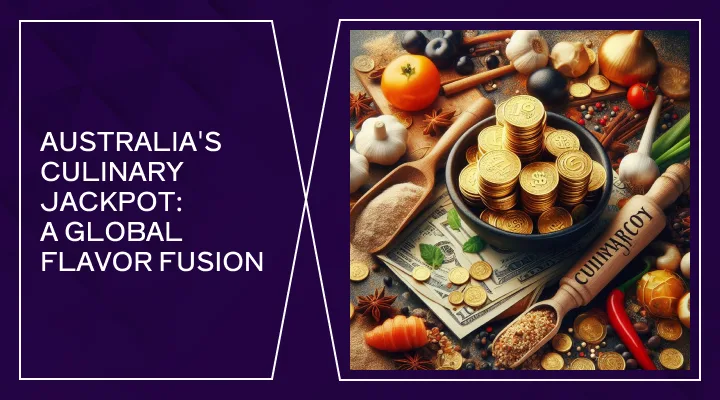Australia’s Culinary Jackpot: A Global Flavor Fusion

The reader is invited to contemplate an Australian restaurant teeming with life and full of aromas, the fragrant aroma of coffee mingling in the air with Asian stir-fry sounds, and Mediterranean spices. This epicurean patchwork was not a sudden apparition; it is the jackpot of Australia’s immigration past, where, like an honest prize pot, it is filled with flavors from every country around the world. So come along on a journey through tastes to see how migration has made Australia’s palate multicultural and wealthy!
The culinary sphere of Australia originated as a simple gamble which evolved from a fusion of British and Indigenous cuisines. Early settlers centered their meals on such delicious dishes like meat pies, fish and chips, as well as native bush tucker. However, the revolution took place when waves of migrants started coming to this continent in large numbers. After World War II, Europe came with its Italian, Greek, and other Mediterranean flavors, thus propelling Australia to put its fortunes on them; this was indeed the first big win that created the basis for the rich variety we have now.
An innovative surge in the culinary field came with Asian migrants arriving in Australia. Vietnamese pho, Chinese dumplings, Thai curries, and Indian tandoori became common on Australian tables, introducing the nation to a world of flavors that transformed their dining scene into a poker tournament. Every community brought their share of authentic dishes, making the national pot incredibly rich in flavor – a successful challenge for the traditional Aussie taste buds to adopt strong, hot, and complex tastes.
In response to global migration movements, Australian cuisine is also evolving, and this time it takes in Middle Eastern and African dishes that play a kind of wild card. Lebanon’s falafel, Ethiopian injera, and Persian kebabs have now entered the food scene, providing a medley of flavors and cooking methods that were novel to many Australians. With their advent, these culinary traditions bestowed additional levels of layers upon Australia’s own rich tapestry, ensuring stories told in every mouthful.
The apex of Australia’s food revolution today is its renowned fusion cooking that confirms the harmonious blending of the unique culinary cultures. In all corners of this land, cooks are trying their hand at cross-cultural cuisine, bringing into existence new dishes that might be a combination of Korean kimchi with Australian beef or Italian pasta with native Australian ingredients. The fusion cooking here is a mark of triumph, for it depicts a country that revels in its diverse heritage through its food.”
The profit to Australia’s culinary gamble is an Australian national identity that is equally determined by its diverse food landscape as it is by its great landscapes and cities. Food festivals are now ingrained in the fabric of Australian life, where people can celebrate cultures from around the world, fusion restaurants are a norm, and home cooks dabble in global flavors. This shows how society appreciates multiculturalism; such a choice of eating dishes of other cultures signifies its respect for their history and traditions expressed through food that they offered.
In a vision of the Australia that is about to come, it seems like the next big thing in the field of food is sustainability and innovation. The trend is toward climate change and ethical eating as Aussies seem more keen on using native ingredients, cutting down food waste, and promoting local producers. This movement signifies more than just a victory for Australian cuisine but for Mother Earth in guaranteeing her culinary bounty to perpetuity.
It is not hard to see that the change and development of Australian cuisine tells us an inspirational tale of taking chances, creativity, as well as the power of being one. This narrative resembles a sort of euphoric rush from striking a jackpot prize, which honors what living abroad affords in terms of richness. While Australians keep on investigating and tolerating new flavors, their food society continues as a dynamic yet evolving scene—a delish gamble that diversity and inclusion can be so potent.










